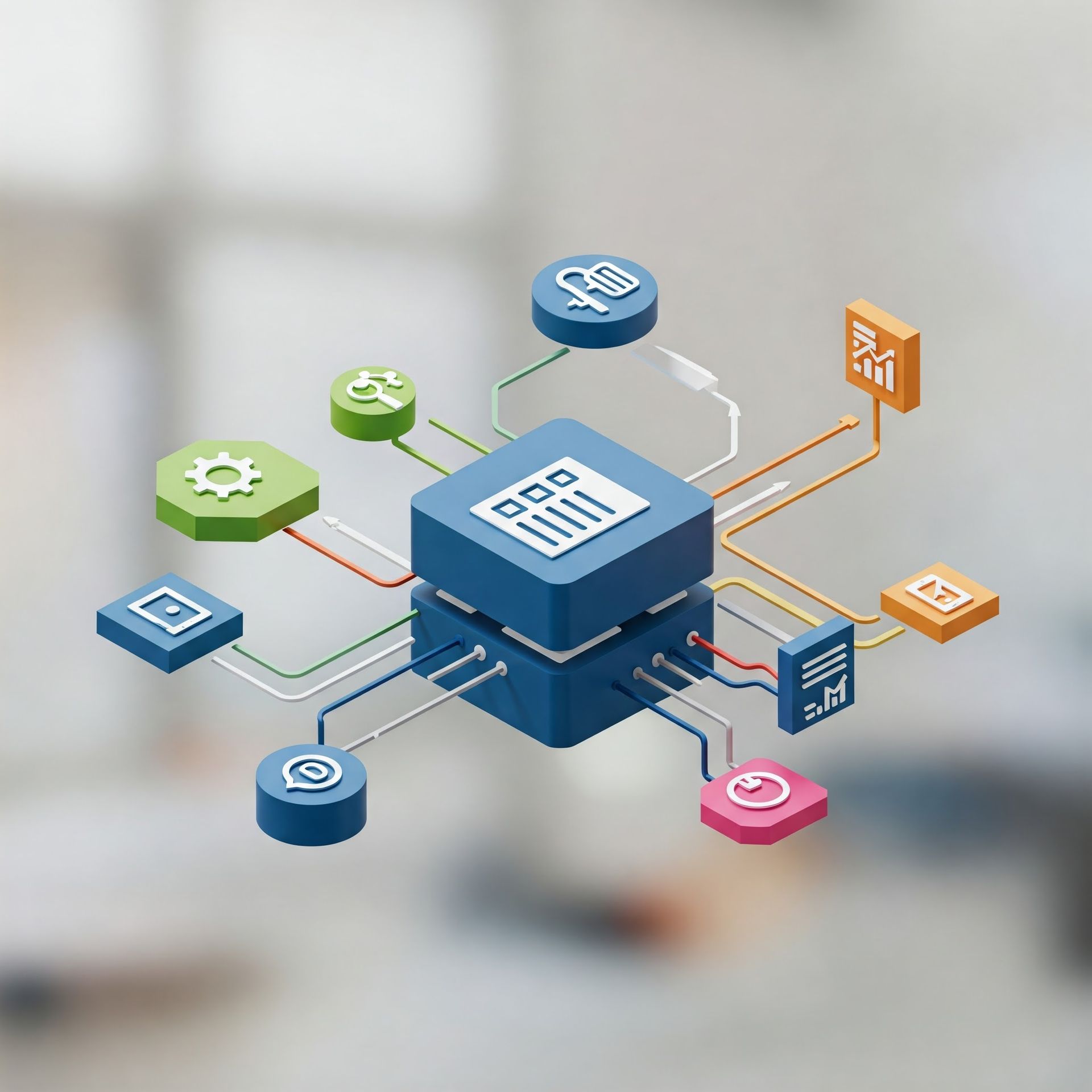Saying Goodbye to the Old, Hello to the New: Navigating the Migration from Forms 1.0 & Dashboards 1.0
Listen to Tresora and Ledgeron's chatting about this blog post:
The Smart Move: Upgrading to Forms 2.0 & Dashboards 2.0 and the Critical Role of Testing
The Oracle Enterprise Performance Management (EPM) landscape is constantly evolving, bringing us more powerful and user-friendly tools to manage our critical financial processes. As part of this progress, we're announcing the upcoming decommissioning of Forms 1.0 and Dashboards 1.0 within Oracle EPM . The future of data input and visualisation in your EPM environment lies with the enhanced capabilities of Forms 2.0 and Dashboards 2.0 .
This transition promises significant advancements, offering improved functionality, a more intuitive user experience, and better performance. However, the journey from the older versions isn't always a direct path. Migrating your existing forms and dashboards requires careful planning, meticulous execution, and, crucially, comprehensive testing within your Oracle EPM ecosystem. This post will guide you through the key considerations for this migration and underscore why robust testing is not just recommended, but absolutely essential for a successful and stable transition.
Embracing the Evolution: The Advantages of Forms 2.0 & Dashboards 2.0 in Oracle EPM
Moving to the newer versions within Oracle EPM brings a wealth of benefits:
- Enhanced Functionality: Forms 2.0 often provides more sophisticated layout options, improved data validation rules, enhanced grid capabilities, and potentially better integration with other EPM modules. Dashboards 2.0 typically offer richer visualisation types, more interactive features, and improved performance for analysing your EPM data.
- Improved User Experience: Expect more modern and user-friendly interfaces for both designing and interacting with forms and dashboards, leading to increased user adoption and efficiency.
- Performance and Scalability: The underlying architecture of the 2.0 versions is likely optimised for better performance and the ability to handle growing data volumes within your Oracle EPM system.
- Alignment with Oracle's Roadmap: Migrating ensures you are on a supported platform that will continue to receive updates, enhancements, and align with Oracle's future EPM strategy.
- Potentially Tighter Integration: Forms 2.0 and Dashboards 2.0 may offer tighter and more seamless integration with other Oracle EPM components, streamlining your overall processes.
Navigating the Migration Maze in Oracle EPM: Why It's Not Always a Straight Conversion
While the destination is desirable, the migration path within Oracle EPM can have its complexities:
EPM-Specific Architecture: The underlying data structures, metadata, and integration points within Oracle EPM are unique. Changes between versions can impact how forms and dashboards interact with Planning, Financial Consolidation and Close, Tax Reporting, and other EPM modules.
Business Rule Dependencies: Your existing Forms 1.0 and Dashboards 1.0 likely have dependencies on business rules, calculations, and workflows configured within your Oracle EPM environment. These dependencies might need adjustments or re-evaluation in the new versions.
Data Source Connectivity: Dashboards 1.0 might connect to specific data sources within your EPM system in a particular way. Dashboards 2.0 might require a different connection configuration or data model.
Security and Permissions: Security settings and user permissions applied to Forms 1.0 and Dashboards 1.0 need to be carefully reviewed and potentially reconfigured in the 2.0 versions to ensure data access remains appropriate.
Customisations and Integrations: If you have custom scripts, calculations, or integrations built around your Forms 1.0 and Dashboards 1.0 within the EPM ecosystem, these will almost certainly require thorough testing and potential modifications for compatibility with the new versions.
Report Dependencies: Dashboards 1.0 might be linked to specific reports within EPM. These links might need to be updated or reconfigured in Dashboards 2.0.
The Indispensable Role of Rigorous Testing in Your Oracle EPM Migration
Given the intricate nature of Oracle EPM and the potential for unforeseen issues, thorough testing is not optional – it's a critical safeguard for a successful migration . Insufficient testing can lead to significant problems within your financial processes:
Data Integrity Issues: Migration errors could corrupt or misalign critical financial data within your EPM system.
Broken Financial Processes: If forms used for data input in planning or consolidation fail, it can severely disrupt your financial cycles.
Inaccurate Reporting and Analysis: Dashboards displaying incorrect or incomplete EPM data can lead to flawed business decisions.
Integration Failures: Broken integrations with other EPM modules or external systems can cripple essential workflows.
Compliance Risks: Errors in financial data due to migration issues can lead to compliance violations and audit failures.
Loss of User Trust: A poorly executed migration that results in broken or unreliable tools will erode user confidence in the EPM system.
A Strategic Testing Framework for Your Oracle EPM Forms & Dashboards Migration
To ensure a smooth and reliable transition within your Oracle EPM environment, implement a comprehensive testing strategy:
- Detailed Inventory and Impact Analysis: Begin by meticulously cataloging all your existing Forms 1.0 and Dashboards 1.0 within Oracle EPM. Analyse their purpose, data sources, dependencies on business rules and other EPM components, and user base. Identify critical forms and dashboards that require immediate and extensive testing.
- Dedicated EPM Test Environment: Establish a non-production Oracle EPM test environment that is a close replica of your production environment, including data, configurations, and security settings. This is crucial for isolating testing and preventing impact on live financial processes.
- Comprehensive Test Case Development (EPM Focus): Create detailed test cases that specifically address the nuances of your Oracle EPM setup:
- Form Testing:
- Data input and submission across different scenarios relevant to your planning or consolidation processes.
- Validation of business rules triggered by form submissions.
- Integration with EPM workflow processes.
- Data storage and retrieval within the EPM database.
- Security and access controls.
- Dashboard Testing:
- Connectivity to relevant EPM data sources (e.g., Planning cubes, Financial Consolidation cubes).
- Accuracy of data displayed based on underlying EPM data and calculations.
- Functionality of interactive elements (POV changes, drill-downs) within the EPM context.
- Performance when accessing and displaying large volumes of EPM data.
- Integration with EPM reporting tools (if applicable).
- Security and data access restrictions.
4. Phased Testing Approach: Implement testing in stages, starting with individual forms and dashboards, then moving to integrated workflows and scenarios within your EPM processes.
5. Key User Involvement (Business Process Owners): Engage your finance and accounting teams, who are the primary users of these forms and dashboards. Their user acceptance testing (UAT) is critical to ensure the migrated tools meet their business needs and integrate seamlessly with their daily tasks within Oracle EPM.
6. Regression Testing within EPM: After any fixes or adjustments, conduct thorough regression testing to ensure that changes haven't negatively impacted other EPM functionalities or introduced new issues within the migrated forms and dashboards.
7. Performance and Load Testing (EPM Data Focus): Evaluate the performance of the migrated forms and dashboards when dealing with typical and peak volumes of EPM data.
8. Detailed Documentation: Document your entire testing process, including test cases, results, and any issues encountered and resolved. This documentation will be invaluable for future maintenance and troubleshooting within your Oracle EPM environment.
Planning for a Successful Oracle EPM Evolution
Migrating from Forms 1.0 and Dashboards 1.0 to their 2.0 counterparts in Oracle EPM is a crucial step towards leveraging enhanced capabilities and ensuring your EPM environment remains modern and efficient. However, within the complexities of Oracle EPM, thorough testing is not just a best practice – it's a fundamental requirement for a successful transition. By understanding the potential pitfalls and implementing a strategic and comprehensive testing framework tailored to your Oracle EPM ecosystem, you can navigate this evolution with confidence, minimise disruptions to your critical financial processes, and fully realise the benefits of the new versions. Don't treat testing as an afterthought; it's the cornerstone of a smooth and reliable upgrade in your Oracle EPM journey.






